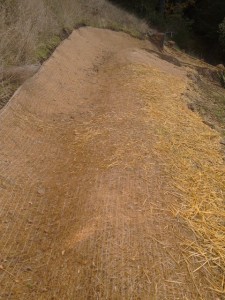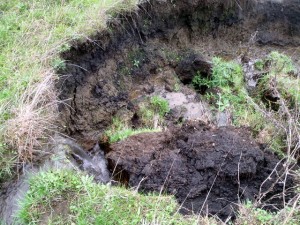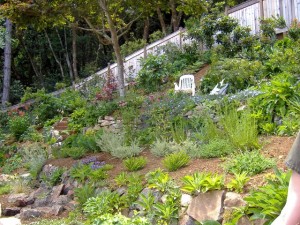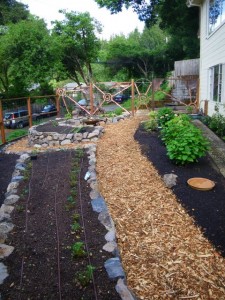by Avis Licht
I’m sitting in my office, looking out the window at the pouring rain. A huge winter storm has descended on us. For the water we are grateful. We just need to make sure that it doesn’t all run off and erode our precious soil. Erosion of topsoil is one of those strangely ignored problems that can create huge problems, but can be addressed with straightforward solutions.
In their book, Topsoil and Civilization, Vernon Carter and Tom Dale, make the convincing case that our misuse of topsoil is directly related to the downfall of civilizations. It takes 500 years to form 1 inch of topsoil and with unsafe soil practices this important layer can be washed away in minutes. They write, “Civilized man was nearly always able to become master of his environment temporarily. His chief troubles came from delusions that his temporary mastership was permanent. He thought of himself as “master of the world” while failing to understand fully the laws of nature.”
Topsoil supports life. Through thousands of years topsoil was formed as organic matter decayed and was deposited in layers. For 350 million years the quality and quantity of soil and life increased. With the advent of civilized man, soil building processes was reversed in most places.
A tiny fragment of the land area on the earth represents the soil that we depend on for the world’s food supply. This small fragment competes with all the other needs – housing, cities, schools, land fills, etc. It is up to each one of us to take care of, protect and enhance our own topsoil.
THINGS YOU CAN DO TO PROTECT YOUR SOIL:
1. Plant to cover your soil. In vegetable gardens use cover crops in the winter where you don’t have vegetables growing.
2. Judicious use of wood and stone to form retaining walls can make a big difference in stopping erosion.
3. Create ditches and/or swales to slow and redirect water runoff.

Swale, at the top of the hill, redirects runoff, and is also covered with biodegradable fabric that has seed sown in it.
Check out these photographs of waterfalls in my own garden after 10 inches of rain!
[portfolio_slideshow include=”2104,2109,2110″]

 Follow
Follow




Sorry, the comment form is closed at this time.